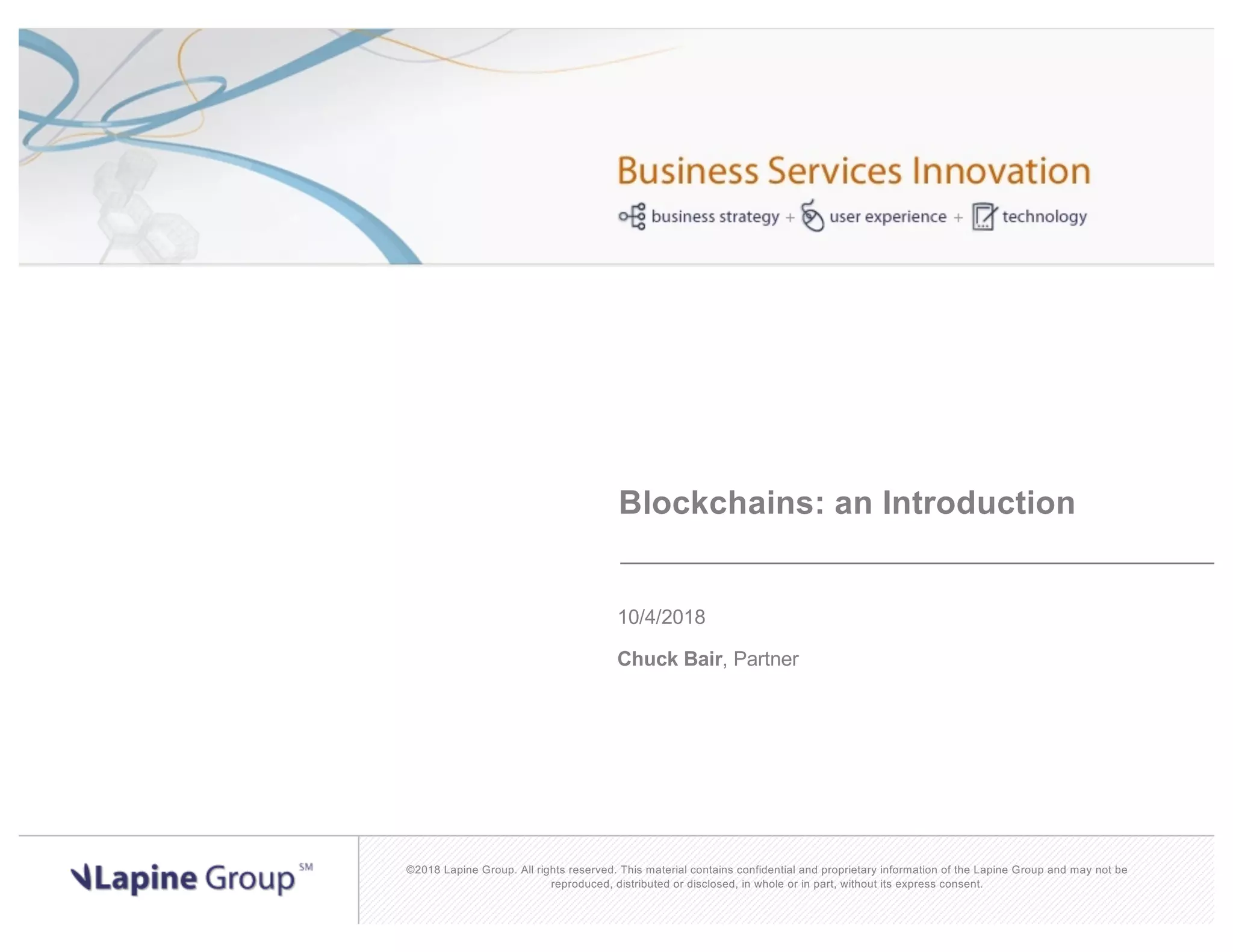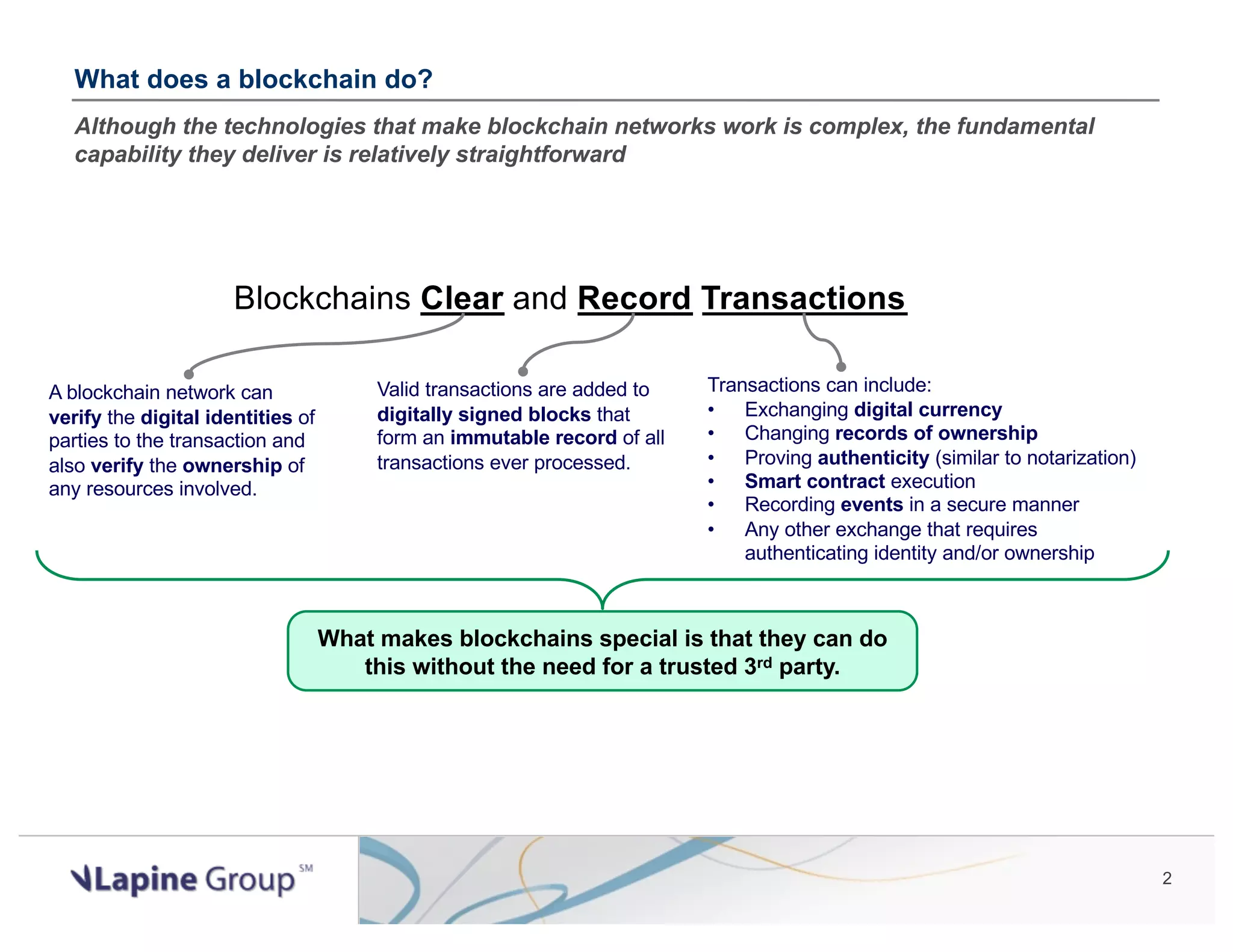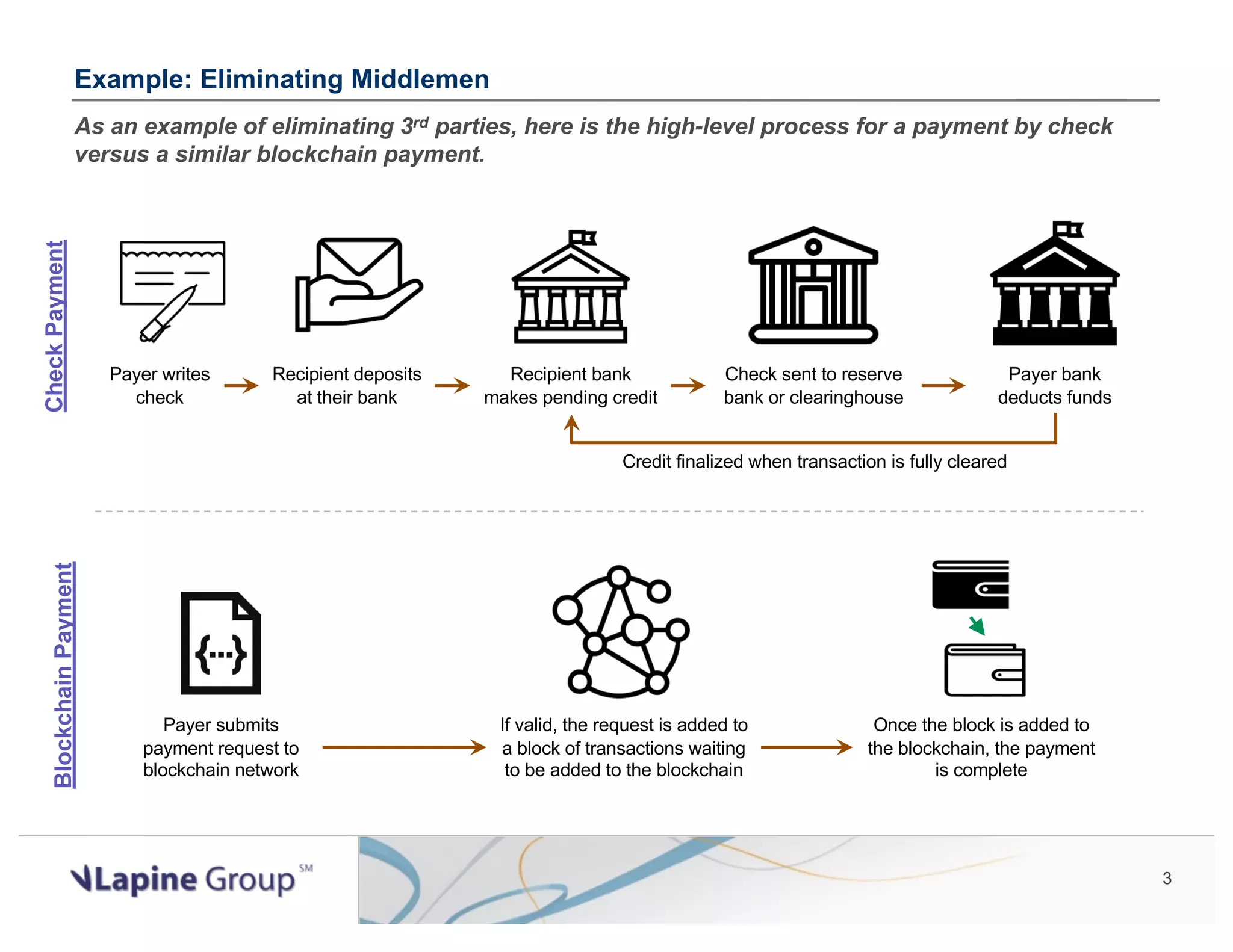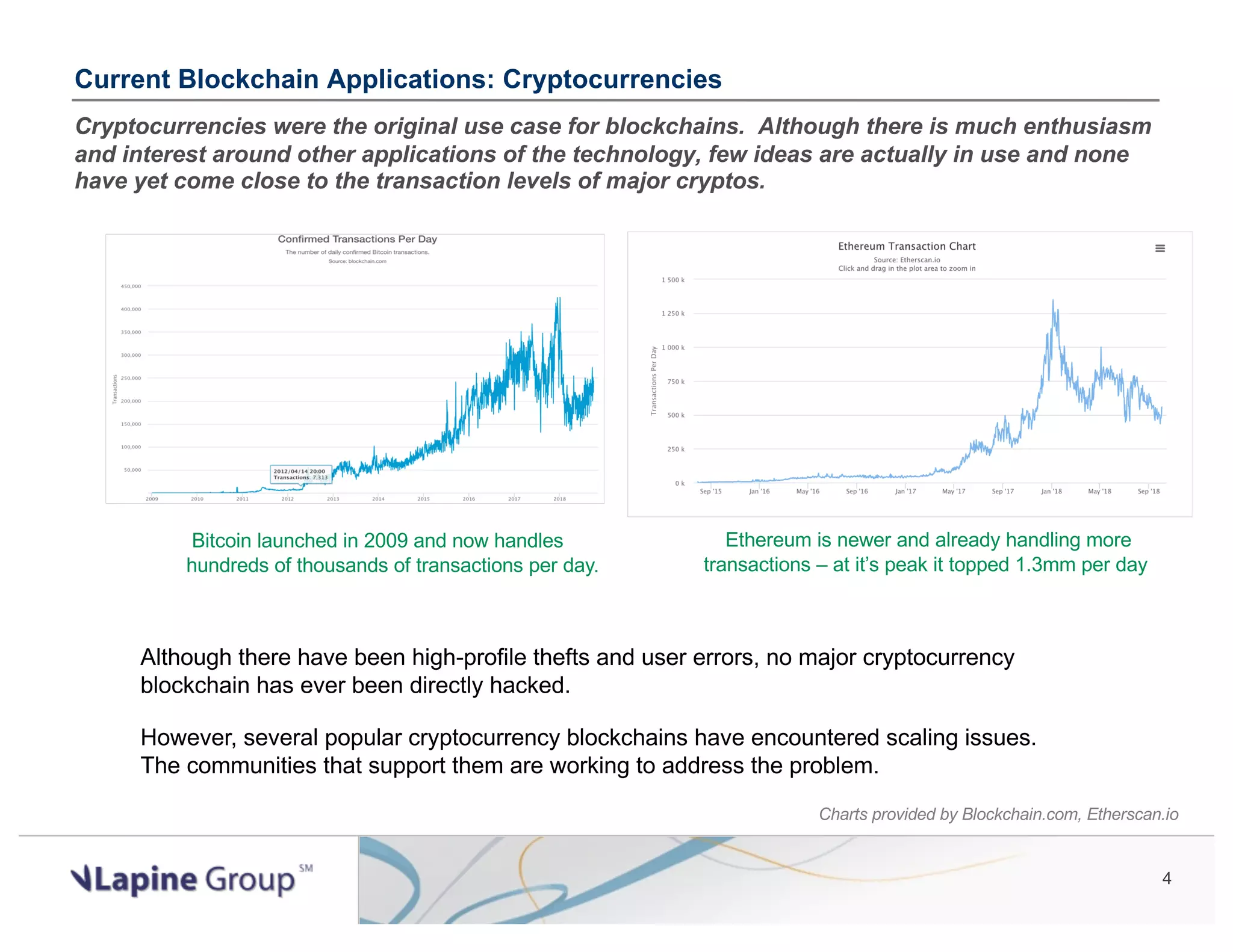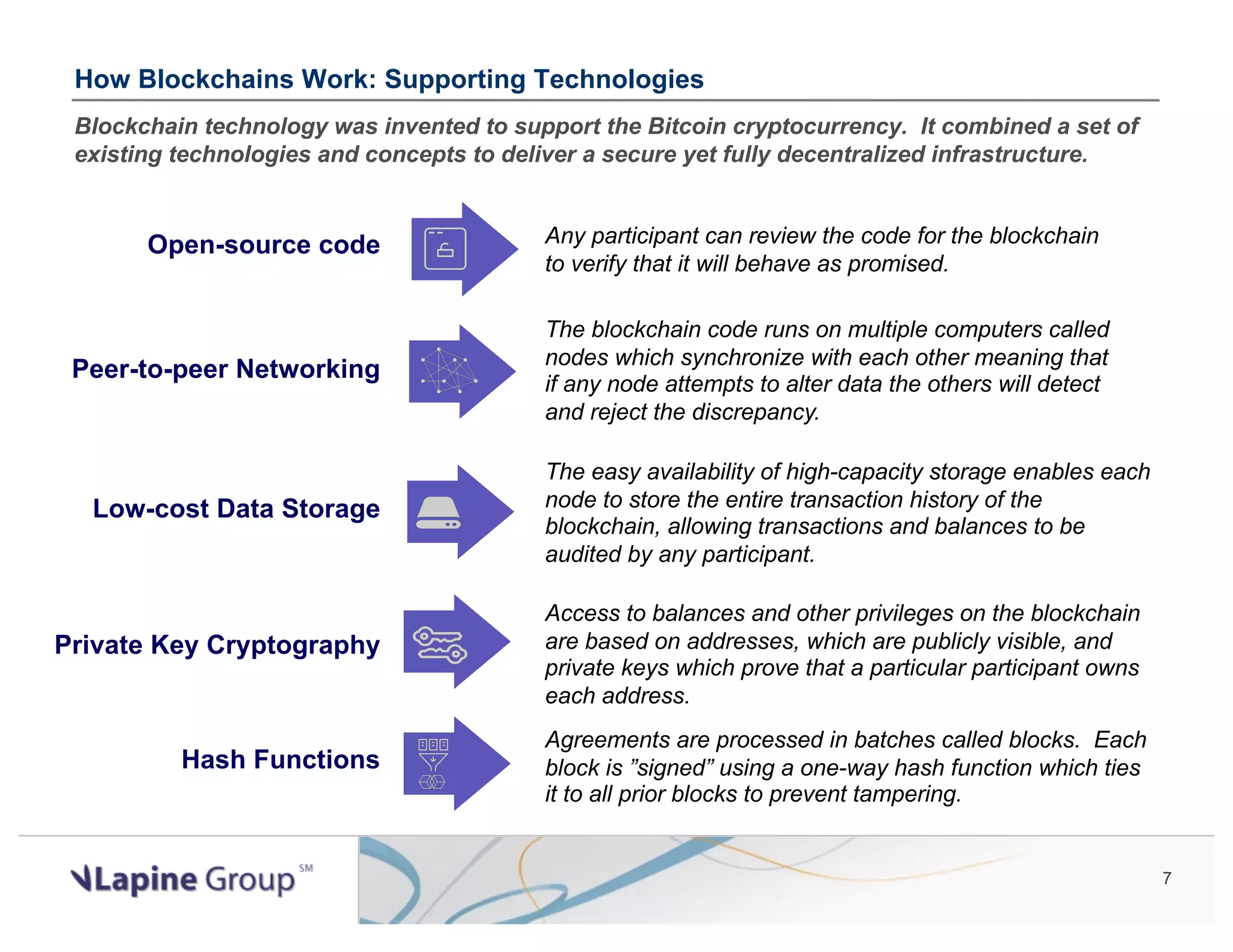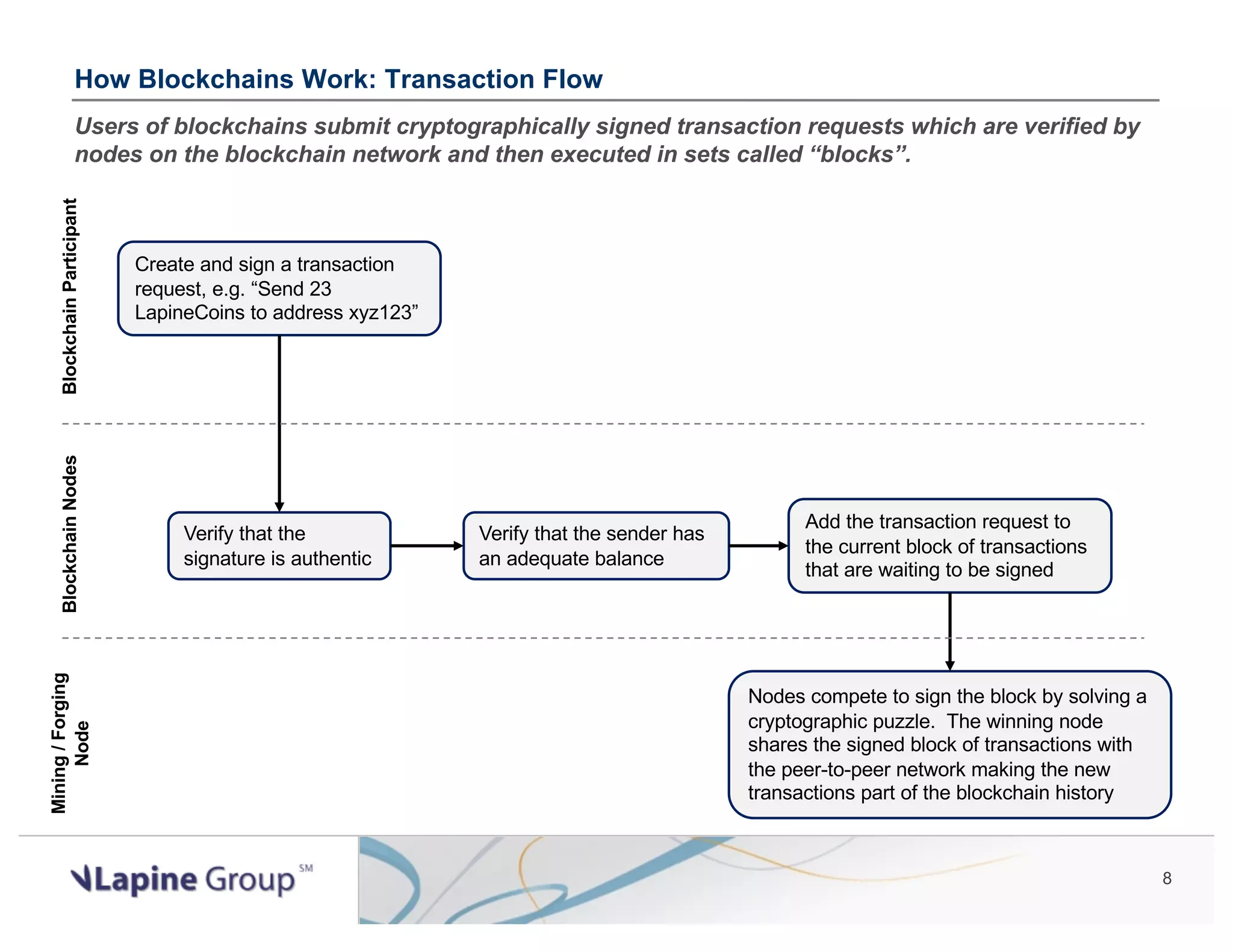The document provides an introduction to blockchain technology, outlining its capabilities in recording transactions without a trusted third party, and highlights current applications, mainly in cryptocurrencies. It discusses the potential future uses of blockchains across various sectors, such as digital identities, smart contracts, and supply chain management. Additionally, it explains how the technology operates, detailing transaction flows and the underlying mechanisms that ensure security and transparency.
